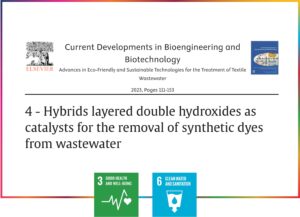
The rise in pollutants from industries, domestic sources, and agriculture poses serious threats to both water resources and human health. To combat this, a crucial focus has been placed on developing innovative techniques, with advanced oxidation processes emerging as a key solution.
In a collaborative effort, researchers have highlighted the efficacy of Layered Double Hydroxides (LDHs) and hybrid LDHs as promising catalysts for removing toxic synthetic dyes from water and wastewater. These materials exhibit outstanding catalytic performance due to their substantial surface area and chemical stability. Moreover, LDHs and LDHs-containing hybrids are cost-effective and readily available, making them practical choices for water remediation efforts.
The research, which includes contributions from Near East University scholars, provides a comprehensive overview of the preparation and characterization methods of LDHs and hybrid LDHs. It delves into recent advancements in their application as highly efficient catalysts for eliminating synthetic dyes from aquatic environments. The mechanisms driving the catalytic removal of various organic dyes by LDHs and hybrid LDHs are thoroughly evaluated.
In alignment with Sustainable Development Goal 3 (SDG 3) – Good Health and Well-being, the research underscores the critical link between water quality and human health. It emphasizes the urgency of developing effective strategies to address water pollution and protect communities from the adverse effects of contaminated water sources.
Furthermore, the study aligns with SDG 6 – Clean Water and Sanitation, as it focuses on innovative techniques to ensure the availability and sustainable management of water resources. By harnessing the catalytic potential of LDHs and hybrid LDHs, the research contributes to the global effort to provide clean and safe water, a fundamental requirement for achieving sustainable development.
In conclusion, Near East University researchers, in collaboration with their peers, have played a significant role in advancing research on LDHs catalysts for water remediation. The study not only addresses water pollution challenges but also underscores the pivotal role of clean water in promoting both health and environmental sustainability, aligning with the broader global agenda of the United Nations.
More Information:
https://www.sciencedirect.com/science/article/abs/pii/B9780323912358000206